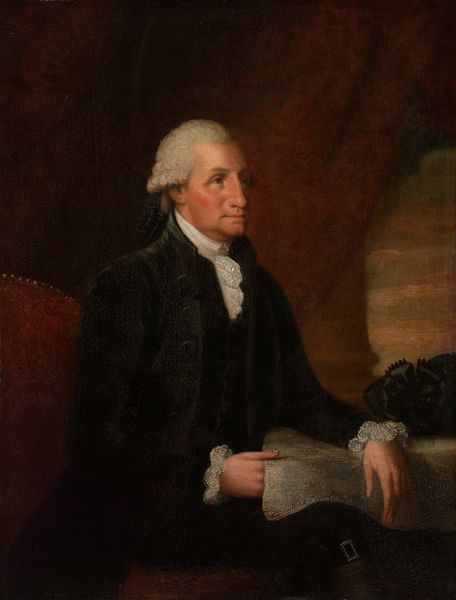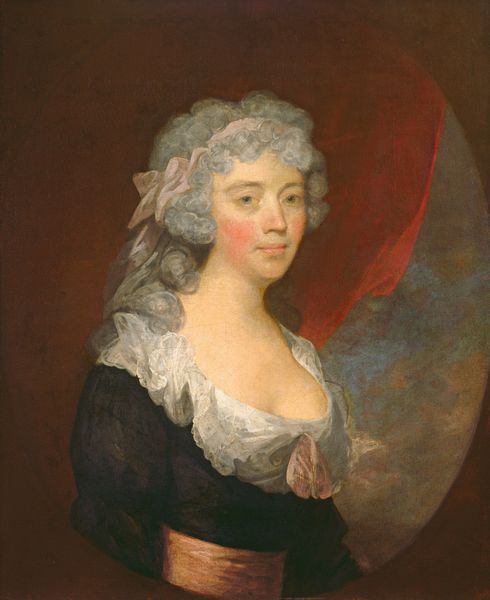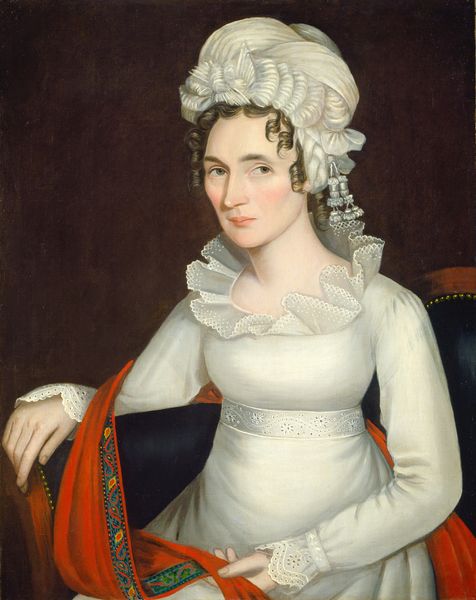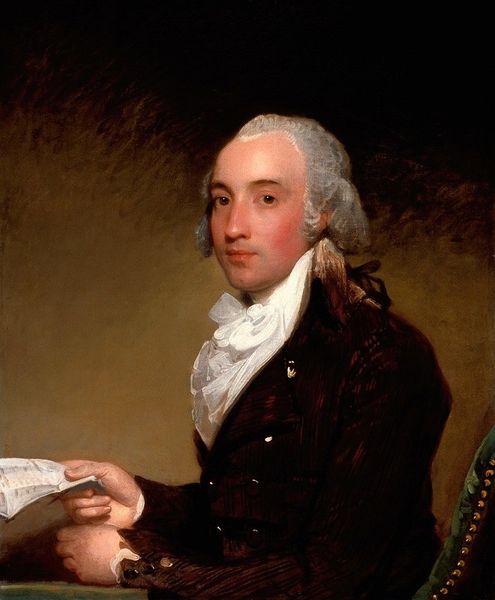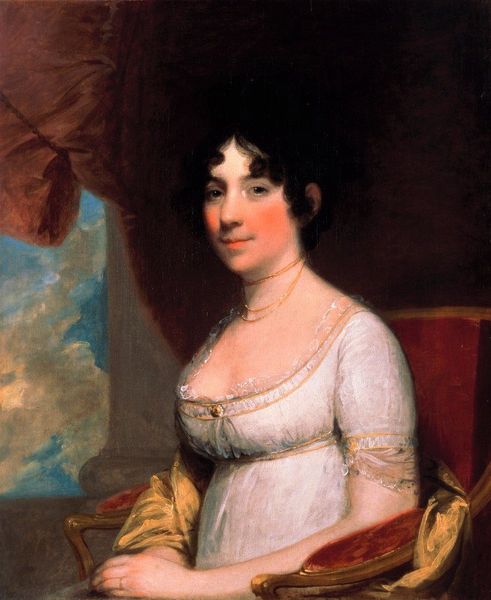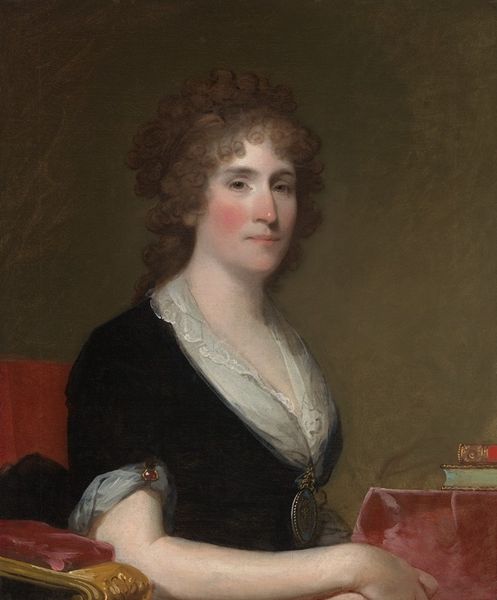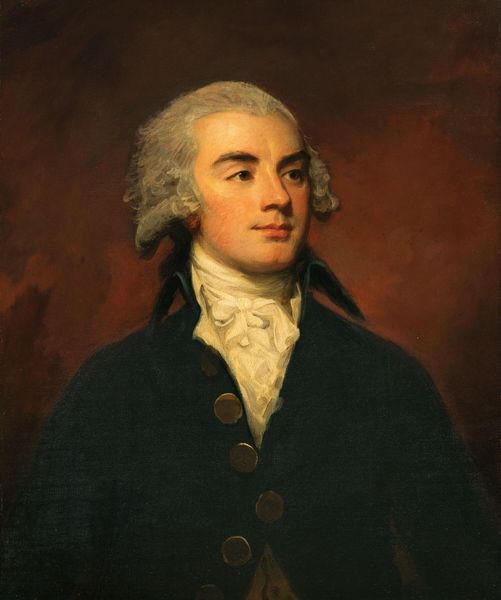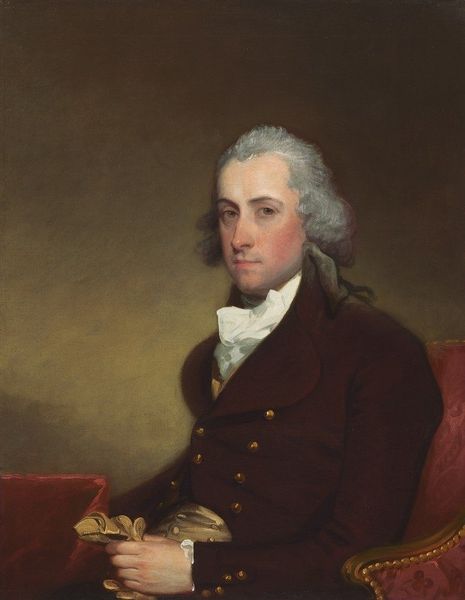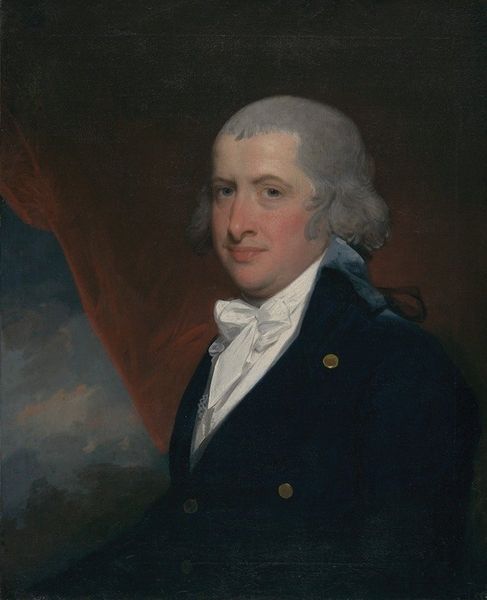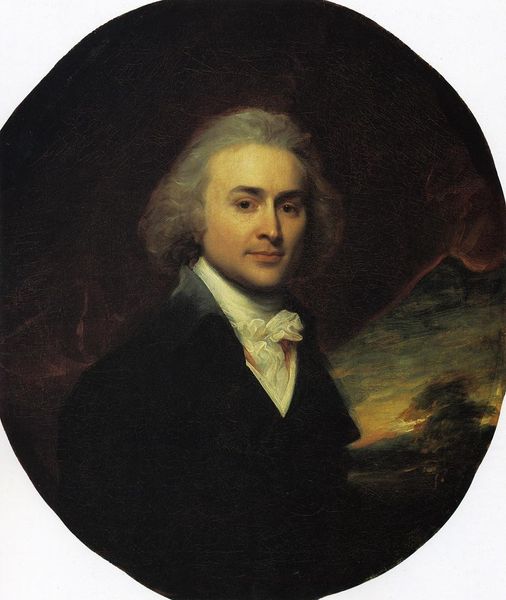
painting, oil-paint
#
portrait
#
painting
#
oil-paint
#
group-portraits
#
romanticism
Copyright: Public domain
Editor: Here we have Charles Willson Peale's "Mr. and Mrs. Alexander Robinson," an oil on canvas from 1795. I'm struck by the almost theatrical presentation. The materials, especially the fabrics of their clothes, seem so central to understanding their status. What’s your take? Curator: Exactly! Let’s consider the materiality of this portrait. Peale’s meticulous rendering of the textiles – Mrs. Robinson's delicate shawl, Mr. Robinson's voluminous neckcloth - isn't just about surface appearance. It speaks volumes about production and consumption in late 18th century America. Where do you think these materials might originate from, and what labor might be involved? Editor: I imagine a lot of this would be imported, right? Fine fabrics like that weren't really mass-produced locally then, and it must have taken so long to produce the raw materials by hand. So, their clothes speak to global trade networks, but also social stratification, based on material access and leisure. Curator: Precisely! Think about the social context: these textiles weren’t simply ‘there.’ They were cultivated, processed, woven, and transported, often through exploitative labor practices. The couple's refined appearance depends on the extensive material culture beneath the surface. Notice Peale’s process too. He isn't just creating an illusion of wealth; he is highlighting how those materials were accessed in early America. Editor: That makes me reconsider what I initially thought was simply an attractive composition. The sharp details and smooth brushstrokes of the materials almost tell a more powerful story than their facial expressions do! I was caught up on the way their clothing sits and interacts within the frame itself without thinking about *how* that material came to be there, or who facilitated its creation. Curator: Right. We’re challenged to reconsider portraiture less as a simple likeness and more as a record of social and economic relations through materials and labor. These fabrics were more than ornamentation; they actively represent the power structure present. Editor: Thanks, I will be considering how paintings demonstrate both production and economic standings through materials.
Comments
No comments
Be the first to comment and join the conversation on the ultimate creative platform.
